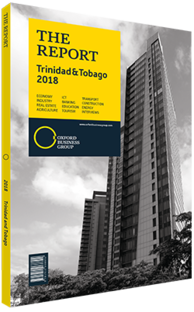Trinidad and Tobago outlines ICT goals in national development plan fastforward II
In July 2017 Trinidad and Tobago launched its national ICT plan, fastforward II. This five-year initiative aims to support ICT growth through 2021 in parallel with Vision 2030, T&T’s longer-term development strategy.
The government’s prioritisation is necessary to ensure T&T remains competitive in an increasingly digital world. Emerging economies with progressive ICT policies allocate 0.5-1.5% of GDP to ICT investment, with hardware, software and services receiving 50%, 30% and 20% of this, respectively, according to a draft fastforward II policy document released in March 2017. Bringing T&T in greater alignment with its peers, the government plans to allocate $140m, or 0.5% of GDP, to support the goals of fastforward II. Some of the plan’s designated programmes could be backed by the Universal Service Fund, the financing arm of a framework introduced in 2015 to provide telecoms services to sectors of the population currently without access. In 2017 the body had $120.6m of available funding at its disposal, according to the annual report from the Telecommunications Authority of T&T (TATT).
Challenges
Despite relatively high fixed-line internet penetration of 78.3 per 100 households, T&T lags somewhat in terms of its productive and innovative use of technologies, and workforce skills remain underdeveloped. Additionally, despite having created e-government services uptake has been low, suggesting limited awareness of these products. In response to these issues, fastforward II has examined global ICT trends and identified opportunities for ICT in the local context. At its core the initiative aims to empower people, as well as to facilitate government and business through ICT. The plan comprises five pillars, which have been aligned with the UN’s relevant Sustainable Development Goals: improving connectivity, increasing human capital, enhancing public service delivery, fostering economic development, and advancing environmental and societal benefit. The success of the plan will depend on a supportive ecosystem of public and private sector players, as well as general guiding principles. The pillars are fleshed out in strategies and programmes, with each assigned to a ministry responsible for executing them.
Roadmap
The strategies will be executed over the five-year lifespan of the plan, mapped out in the Phase 1 Implementation Roadmap (2017-21). The performance of previous development initiatives has shown that success is dependent upon proper governance, so fastforward II outlines roles and responsibilities of key stakeholders, including the National ICT Steering Committee, National ICT Executive Committee, National ICT Advisory Panel, and the Government Chief Information Officer’s Office. fastforward II sets a number of goals to reach by 2021. The authorities aim to increase ICT’s contribution to GDP to 5%; make broadband access with a minimum download speed of 100 Mbps available to 85% of households and businesses; transform five high-demand and high-volume public services into end-to-end e-services, as well as use five enterprise-wide applications to run routine functions; reach 50% adoption of public shared services and 50% use of shared infrastructure; create 30,000 jobs; and have 500,000 users participating in government forums.
Early signs of optimism ahead of the sector’s 2021 goals came when T&T ranked 67th out of 139 countries globally in the World Economic Forum’s 2017 Networked Readiness Index, up from 96th the previous year, which in relation to its Latin American and Caribbean neighbours placed it ahead of Brazil in 72nd place, but behind Chile at 38th. The country also rose three places to 68th position in the International Telecommunications Union’s 2017 ICT development index.
“The main drivers for this upward trend were increases in the mobile broadband subscription rate, greater LTE availability and a rise in internet usage,” Annie Baldeo, executive officer for policy, planning and market economics at the TATT, told OBG. This performance should support T&T’s goal to rank first in the Caribbean in both of these indexes in the coming years.
You have reached the limit of premium articles you can view for free.
Choose from the options below to purchase print or digital editions of our Reports. You can also purchase a website subscription giving you unlimited access to all of our Reports online for 12 months.
If you have already purchased this Report or have a website subscription, please login to continue.

